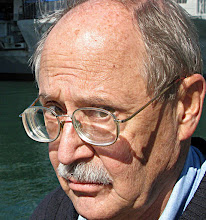Thursday, September 12, 2019
Leaving Cheyenne
My sister Susan and I, along with her two dogs - Tutu and Blackberry - drove up to Cheyenne, Wyoming from Fort Collins Monday afternoon. Cheyenne is only 47 miles away, and so it was a fairly quick trip. We parked downtown and walked across the street to Cheyenne's famous train depot, seen in the photograph on the left. There is a very pleasant plaza in front of the station, where a tourist trolley and a horse drawn carriage were picking up tourists for a tour of the city. Unfortunately, Susan's dog Blackberry was so enthusiastic and running so fast after being cooped up in the car that she tripped and appeared to have sprained her front leg. She was having a hard time walking, and so I carried her back to the car and we finished our visit by driving around the city, and then heading back to Fort Collins earlier than expected. Later that evening, thankfully, Blackberry seemed much better and was able to go out on her nightly walk (or smelling expedition, to be more accurate).
In any case, I did a bit of research before we headed up there, and learned that Cheyenne was founded in 1867 during the construction of the transcontinental railroad, which was completed on May 10, 1869, when the final spike was driven at Promontory Summit, Utah. But in fact, the truth is that passengers were still not able to go coast to coast on a train nonstop. They had to disembark at Council Bluffs, Iowa, and take a ferry across to Omaha, where they re-boarded the train. Plus, at that time, the train line stopped at Sacramento, where passengers had to board still another boat to Oakland. The City of Denver was freaked out that the transcontinental railroad had bypassed the city, and raised money to build a track from Denver to Cheyenne. At the same time, another railroad company extended its tracks from Kansas City to Strasburg, Colorado, where existing track allowed trains to connect with Denver and Cheyenne. And therefore, just a year after the spike was driven in Utah, trains could go from New York through Denver and Cheyenne, and then west to Oakland, without passengers having to disembark. This was the first true transcontinental railroad line. But do Strasburg and Colorado get the credit? Hell no. Fake history rules!
Subscribe to:
Post Comments (Atom)



No comments:
Post a Comment